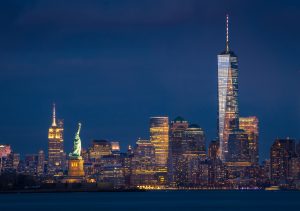 By Monica Kanojia, Consultant, U.S. Department of Energy
By Monica Kanojia, Consultant, U.S. Department of Energy
American cities are home to nearly 63 percent of energy use, despite only accounting for 3.5 percent of land area. It is estimated that these cities and their buildings will account for 87 percent of domestic energy consumption by 2030.
Since its inception in late 2016, 43 cities and counties have joined the U.S. Department of Energy’s (DOE) Better Communities Alliance (BCA), a first-of-its-kind partnership between DOE experts and leaders from the public and private sectors. Through BCA, cities and counties have access to energy efficiency, renewable energy, and sustainable transportation solutions that support mutual goals of creating cleaner, smarter, and more prosperous communities.
Given increasing energy needs, aging infrastructure, and new challenges to ensure clean air and water, local government leaders are developing and implementing strategic solutions to enhance future livability.
BCA now represents more than 40 million Americans in over 20 states, which reflects the importance of energy innovation at the local level.
Better communities
Kicking off the Leading-Edge City Government Innovation for Energy Independence session in May at DOE’s Better Buildings Summit, BCA Partner New York City presented strategies to boost its economy and increase efficiency while improving the quality of life for its residents.
[Tweet “Better buildings pave the way for energy independence”]
New York City has approximately one million buildings that consume nearly 75 percent of its energy, and are the main drivers of the city’s pollution. It is expected that a majority of them will still be standing in 2050. Implementing new, high performance construction plans does not go far enough to reduce pollution.
That’s why New York City, supported by an Environmental Defense Fund (EDF) Climate Corps fellow, explored retrofit opportunities for existing buildings between 25,000 to 50,000 square feet with an expected energy reduction of 40 to 60 percent.
This effort, called the NYC Retrofit Accelerator, was developed by the city to streamline processes for making energy efficiency improvements to existing buildings. Based on work in partnership with EDF, the program provides lighting upgrades, efficient cooling, water use reduction, and other applications of renewable energy.
New York City’s efforts fall within its holistic action plan, One City: Built to Last, aimed at achieving long-range sustainability goals.
Better buildings
DOE’s annual signature efficiency event, the Better Buildings Summit, is a gathering of leading organizations that are working to improve energy efficient building design, construction, and operations. It’s also an opportunity to discuss strategies for reaching energy savings goals and to reaffirm organizational commitments to making a substantive difference in Americans’ quality of life.
Learn more about the Better Communities Alliance here.
Inspiration was in the air at this year’s summit, amongst more than 1,000 participants discussing case studies highlighting energy-cost savings and performance, identifying creative infrastructure improvements for communities and companies, and sharing first-hand knowledge about how well private-public partnerships drive innovation.
One of several overarching themes raised at the summit was the importance of community resilience to a variety of sectors, including the proactive stance of local governments “leaning in” to achieve it.
Other cities and towns across the country are also committed to improving their local economies, boosting energy productivity, and enhancing livability. These community efforts show no signs of slowing down.
Photo source: HaizhanZhen










One Comment
Great article. Thanks for posting it.